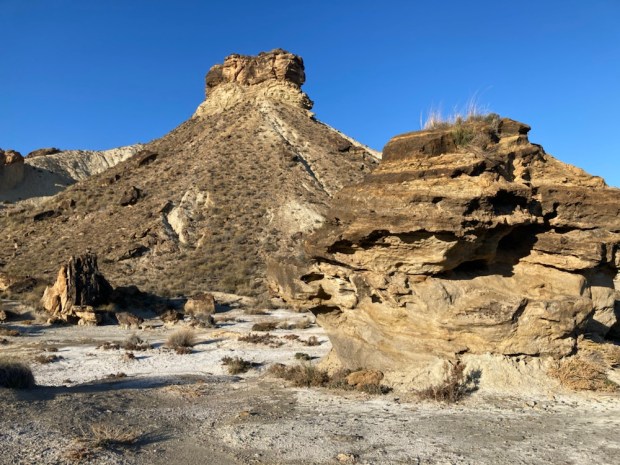
I think the Tabernas desert was where I first fell in love with Spain. 30 ish years ago, on tour with young lads in our old Dodge van, we parked up way down a sandy track amid the remains of an adobe film set. Surrounded by the surreal landscape of fluted slopes of grey and ribbed crests of pale yellow, gorges, gulches and clefts, we spent days exploring this otherworld. Looking for scorpions and tarantulas – with an eye out for bandits, or Indians, on the skyline. Most afternoons, if the wind was right, we would hear gunshots and shouts in the distance. We built a bread oven against the wall of the chapel bell tower and soaked in sunshine.
A setting for fantasy, under a big blue sky, the wide open spaces offered a possibility of some kind of freedom. Harsh and wild, ancient and epic. Awesome.

We returned this week for a few days rambling in the ramblas, the dry river beds that coil and snake their way through the eroded terrain.
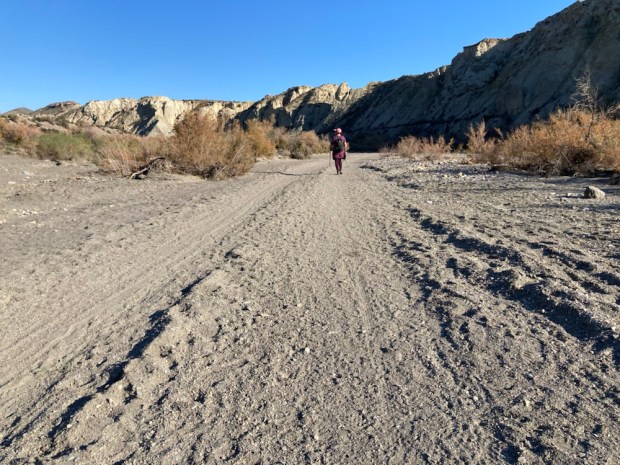
A seabed 8 million years ago, as the Sierra Alhamilla to the south and the Sierra Filabres to the north rose up the area became a giant lake or inland sea. As the waters slowly evaporated the bottom layers of mud and sandstone ,marl and gravel were exposed and slowly, over a geological timescale, became eroded by wind and water into the extraordinary landscape we set off to explore.
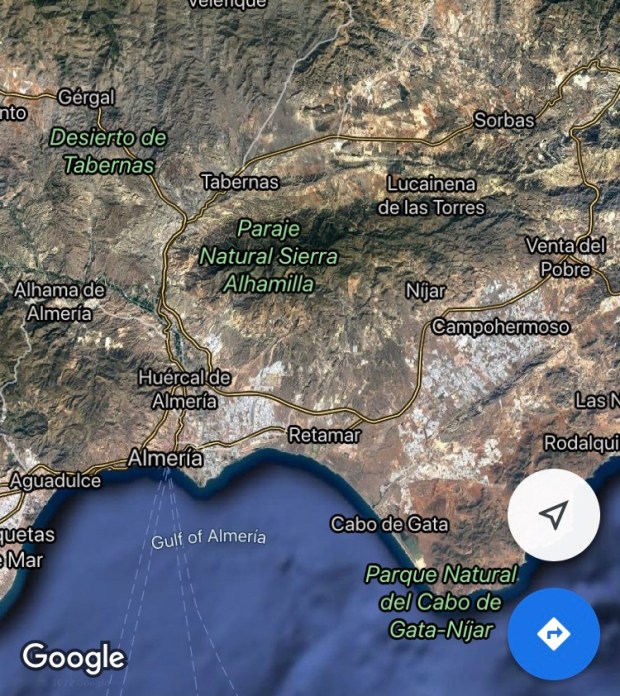
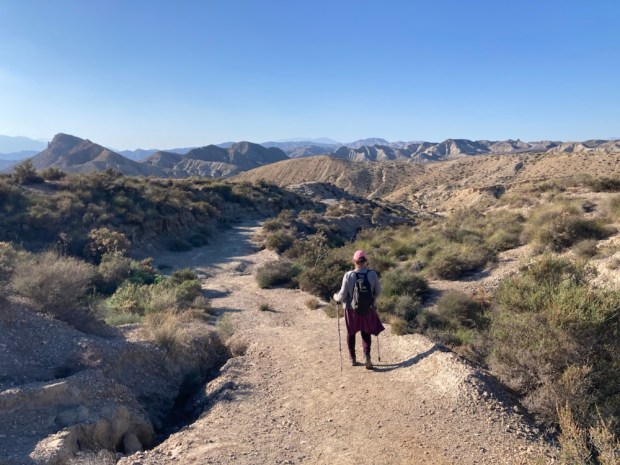

After parking at Mini Hollywood, one of the 3 or 4 Western movie sets open as tourist attractions in the area with daily shoot outs and can can girls in the saloons, it was fitting to soon come across a lone cowboy in the creek below.

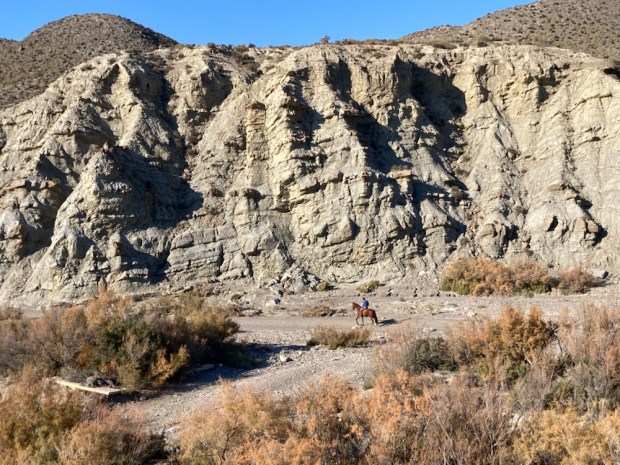
Generally accepted as being Europe’s only desert, with under 250mm rainfall a year and temperatures from -5 to 48 degrees averaging 17c, it’s an inhospitable environment whilst at the same time being strangely attractive.

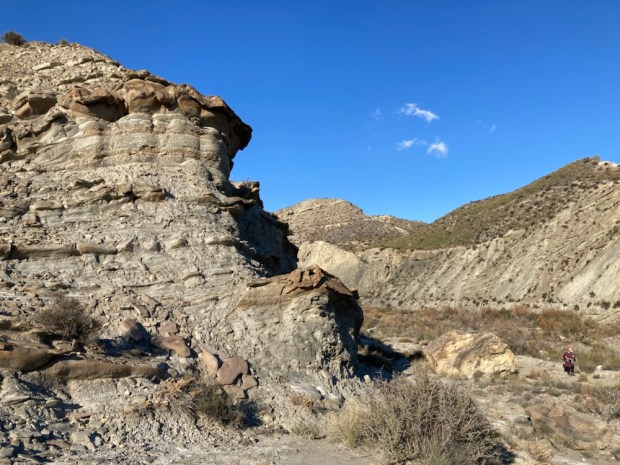

The arid climate, infertile soils and constant erosion ensured that this was always marginal agricultural land and the declining rainfall and economic realities drove most settlers out decades ago, leaving only scattered and crumbling walls of cortijo and terrace and enigmatic canals carved through the rock.

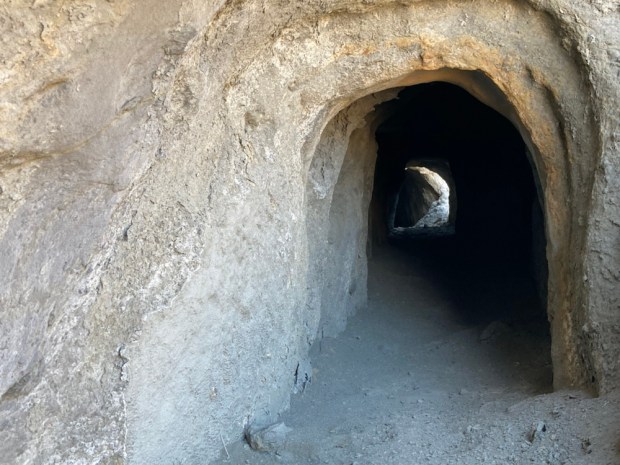
The 280sq km of the desert was made a Natural Site in 1989 and have been since been declared an SAC (special area of conservation), an SPA (special protection area- for the bird life) and an SCI (site of community interest) although the hostile and unstable nature of the place maybe its best defence. When we ventured above the riverbed to the cliff tops we discovered a labyrinth of eroded holes and flushed out gullys where water had created a Swiss cheese landscape.

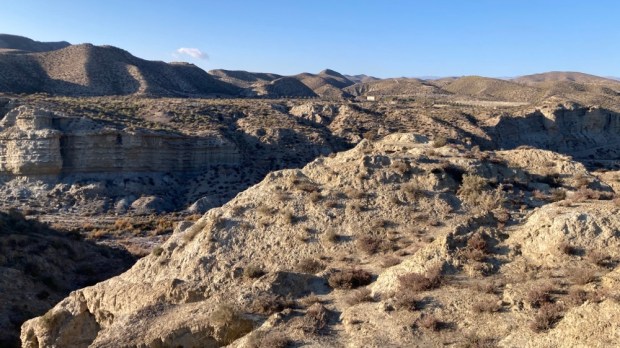
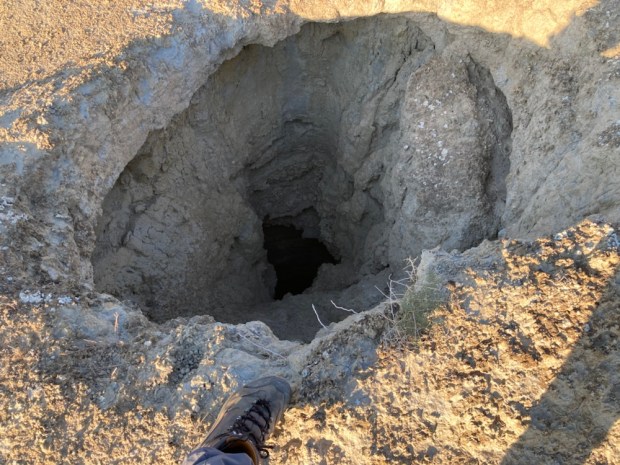


A collection of beehives surprised us, wondering where the nectar was to be found. Amazingly there were still traces of water in some of the deep ravines and they supported tamarisk, oleander, some broom and other endemic plant life. We climbed down into a reed bed that also had strange coral fungi like life forms emerging through the salty crust of sand.

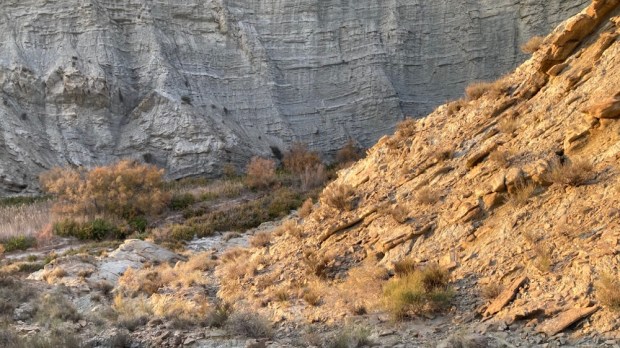


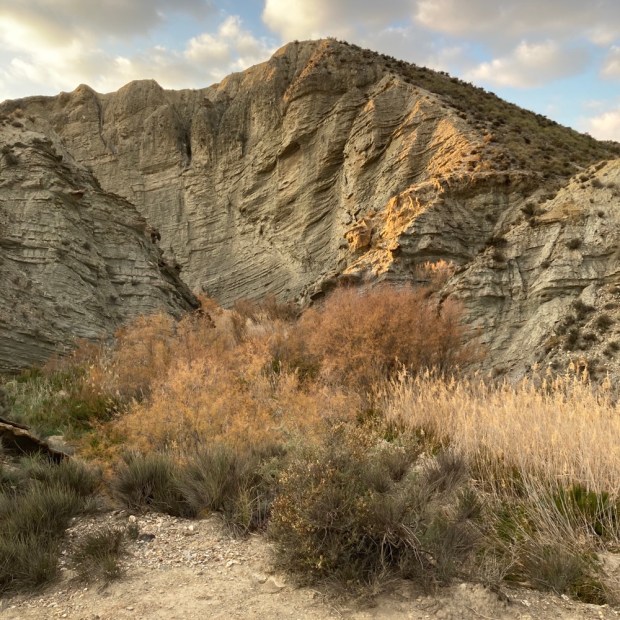
We were grateful of GPS and app assisted navigation in this warren of possible pathways. As the sun gave up and darkness encroached we climbed out of the maze under the baleful gaze of the wolf moon to sleep beside the ghosts of the good, the bad and the ugly.
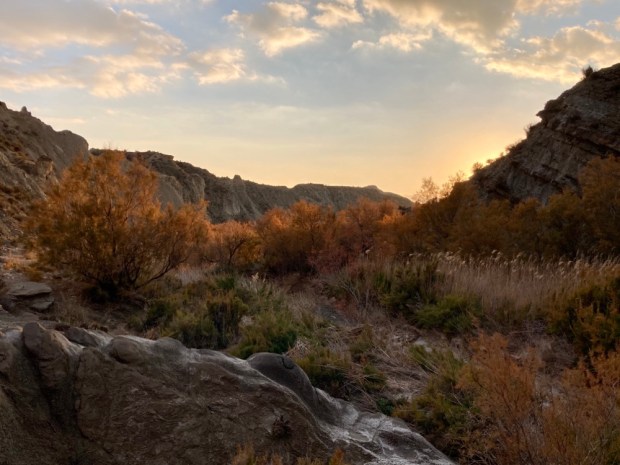
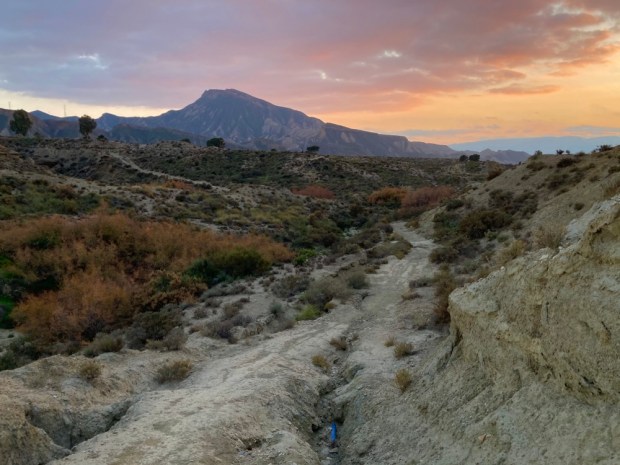
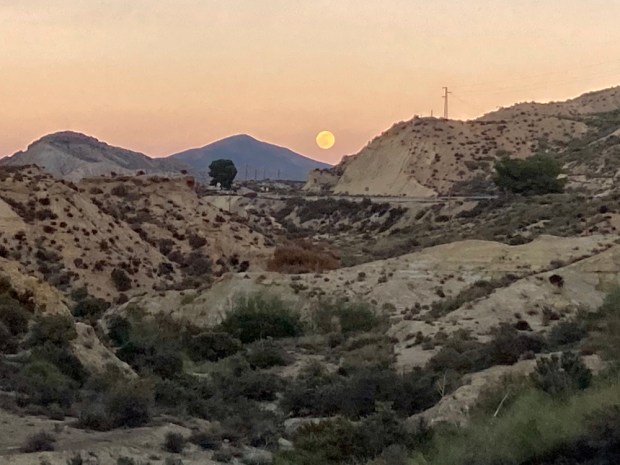
A full days hike of 18km started in the cold light of dawn as the full moon sank into the eucalyptus.


From the back of Fort Apache a set of partially collapsed wooden steps wound down the Barranco del Grillo and into occasional trickling waters in the Rambla de Genaro where salt encrusted flora tenaciously survive.
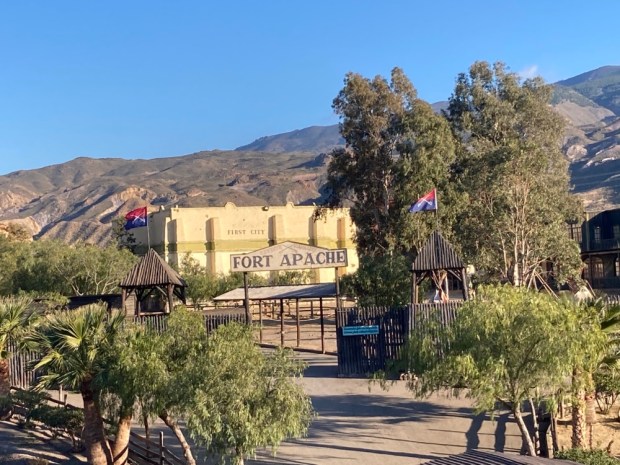



The Mesa like landforms reminded us of the American southwest but also the Sinai desert, no wonder the location has been used in over 300 movies to portray both as well as Australia, North Africa and fictional landscapes past and future. After diverting down the Rambla de Tabernas we reached the Oasis de El Cautivo, created for movies, as was the Oasis of Lawrence of Arabia a little further on.


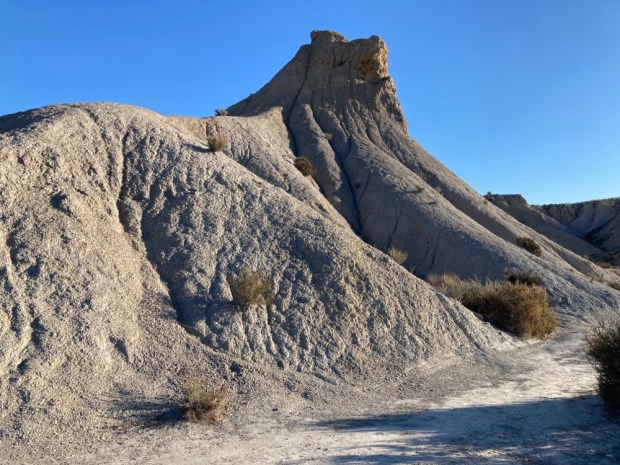
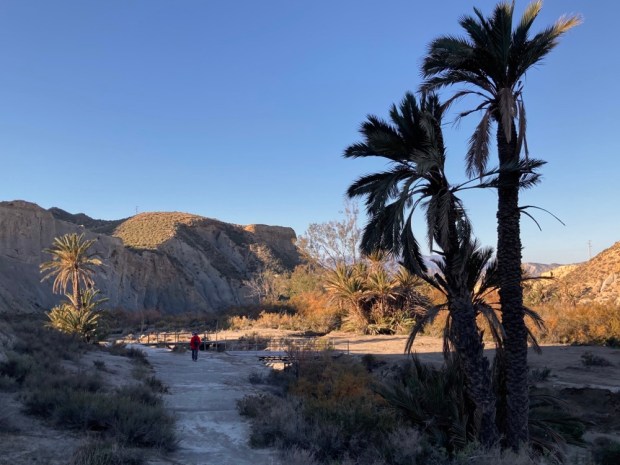

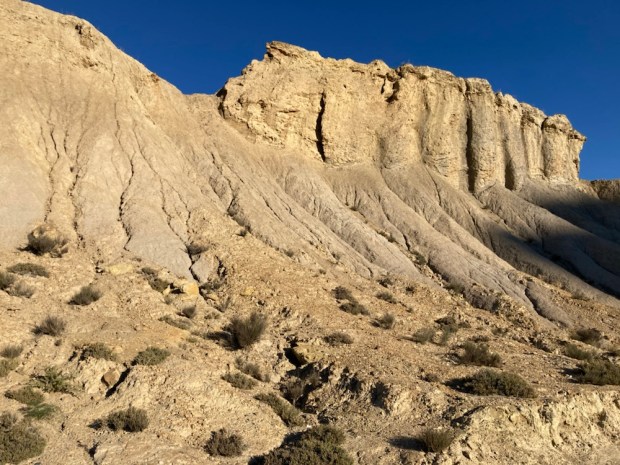
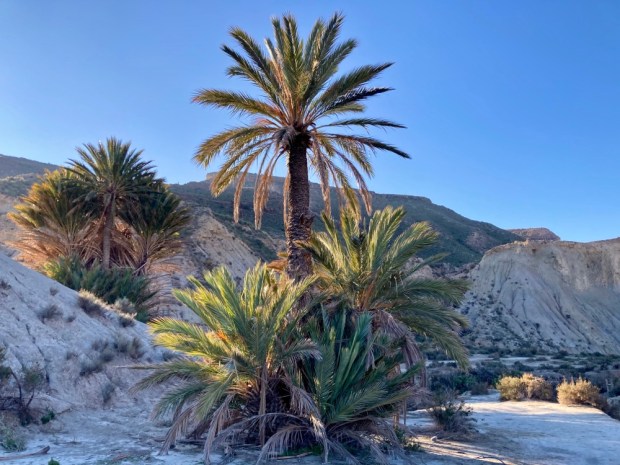


The illusion of being deep in the Wild West or the land of Exodus was somewhat diluted by having to go under the Puente del Cautivo and the A92 motorway whose background hum was more of a presence than we liked when we clambered up from the deep ravine of Rambla de Otero.
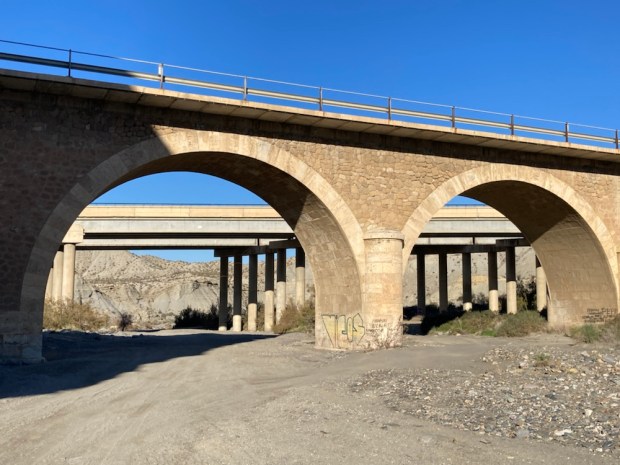



The geological wonders of our surroundings were astounding. The forms, patterns and shapes created by time, wind, water, pressure and gravity were seemingly infinite and beautiful. The softer marls and sandstones weathered away to leave harder conglomerate rock sitting high and (very) dry. The movement of strata under irresistible force over irrepressible time made a gracefully slow dance through waves and curves.

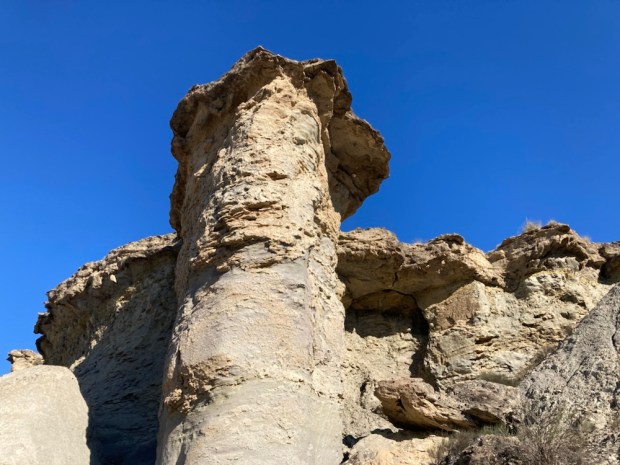


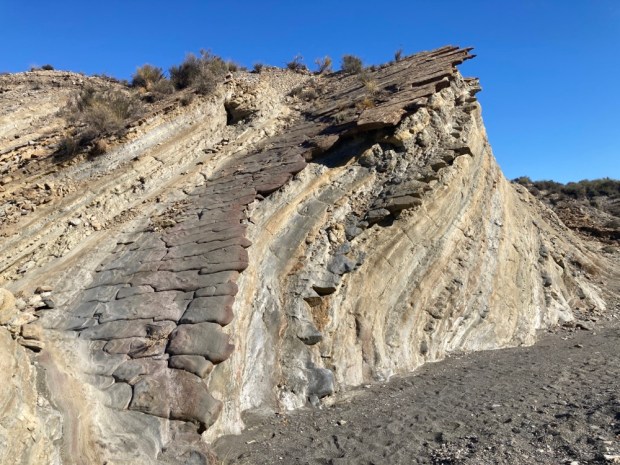


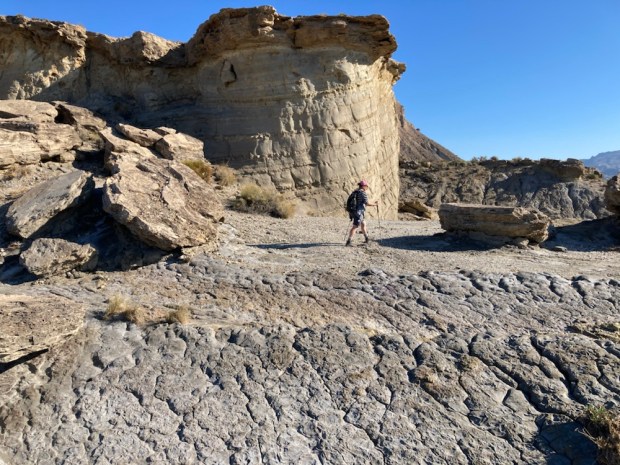




Climbing up to the top of the rambla we reached the higher tableland of Llanos de las Salinas with salt pans and waterfall of salt travertine and the towering Torre de Hades with a yin/ yang of rocks at its base.
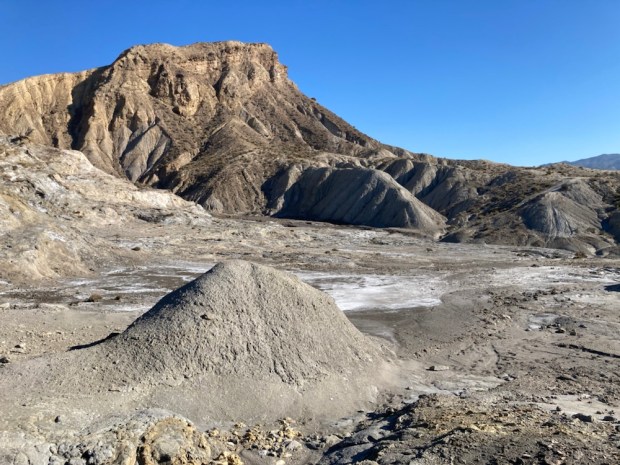

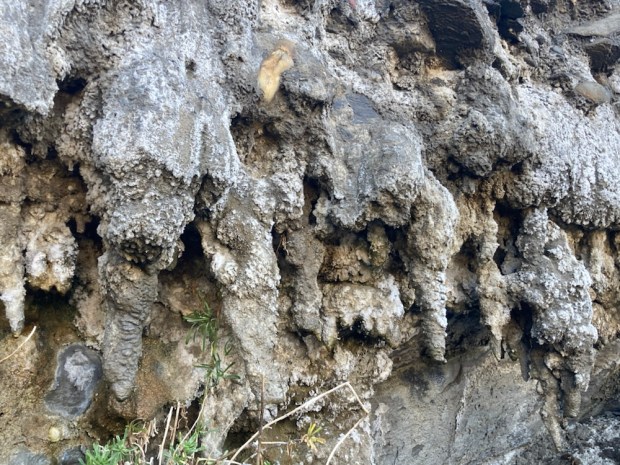
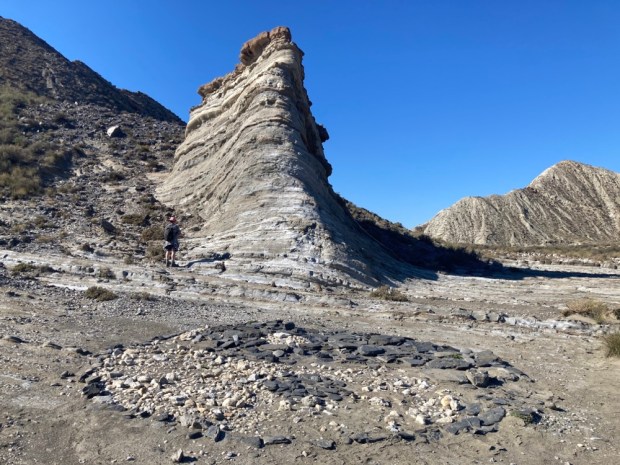
Back down to a tunnel under the motorway where a gallon water container, (not the first stash we had spotted and wondered if they were placed to aid those arriving illegally to the shores of Almeria), and some delicate flowers prompted thoughts of life’s fragility in this harsh place.

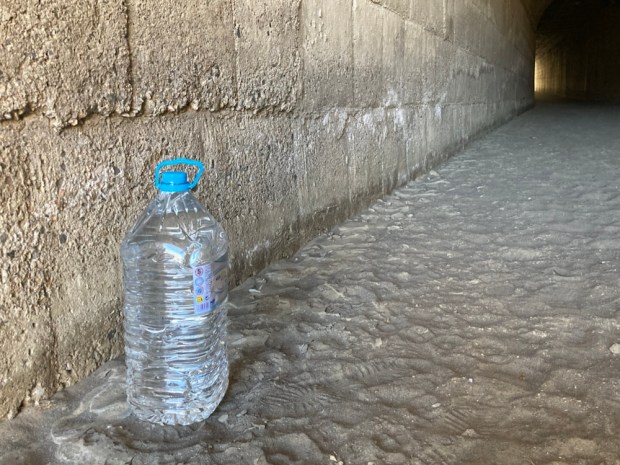
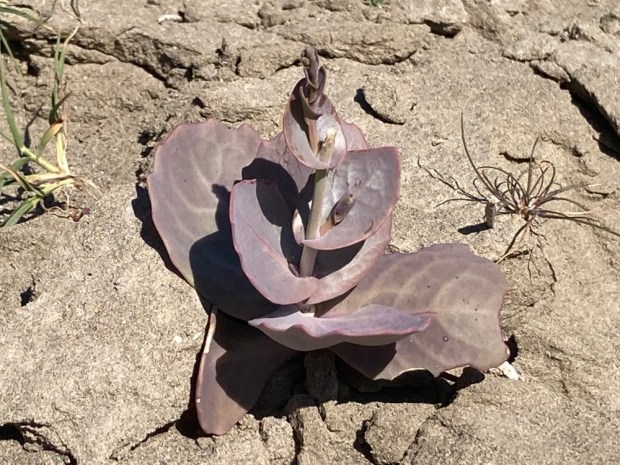
A long meander up the narrowing cleft of the Arroyo Verdelecho led us up again to a eucalyptus grove and the abandoned movie set of Rancho Leone and further, the lower ranking attraction of Western Leone with its bizarrely shaped tipis.
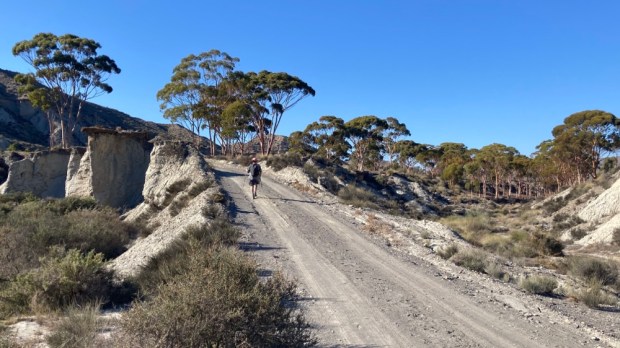





The final quarter of the hike took us high around the shoulder of scrubby hills and back down again to the Rambla Tabernas before emerging once again at the strange combination of zoo and cowboy.



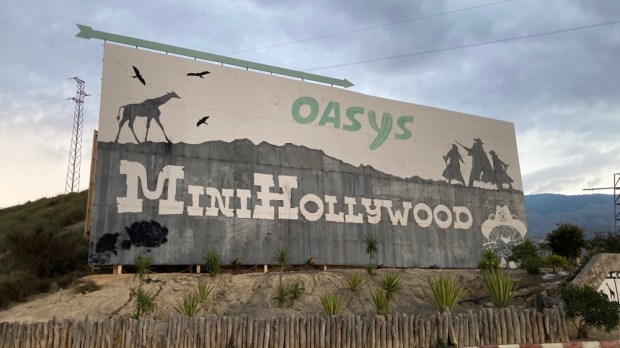
Discovering a track beside the “fun park” we headed for the hills- to a park up with a view.

A short walk further up into the Sierra Alhamilla in the morning took us through more eroded earthforms and rock formations with subtle changes in colouration and far reaching desert vista to a small roadside shrine encapsulated within a hollow boulder.
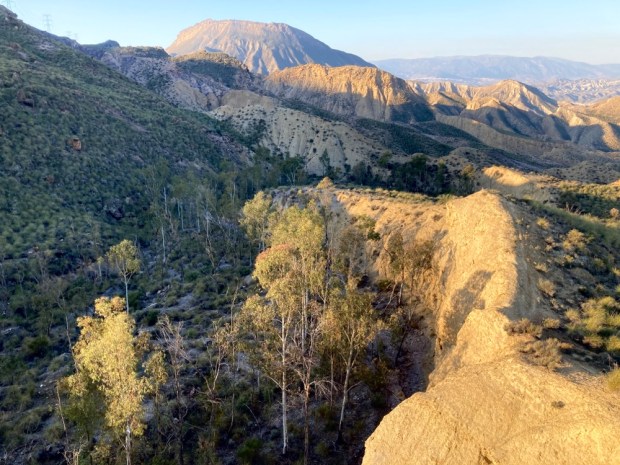
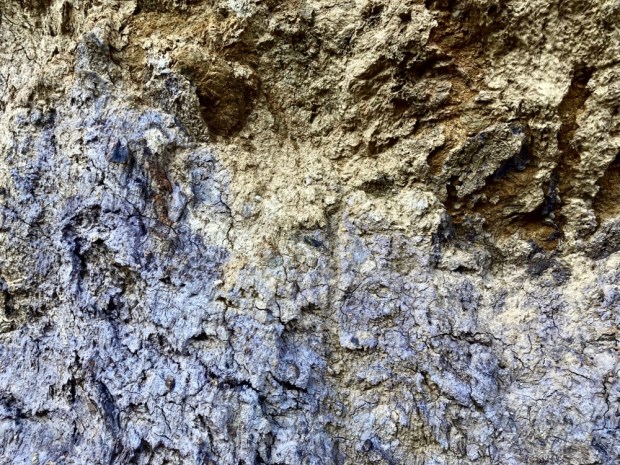
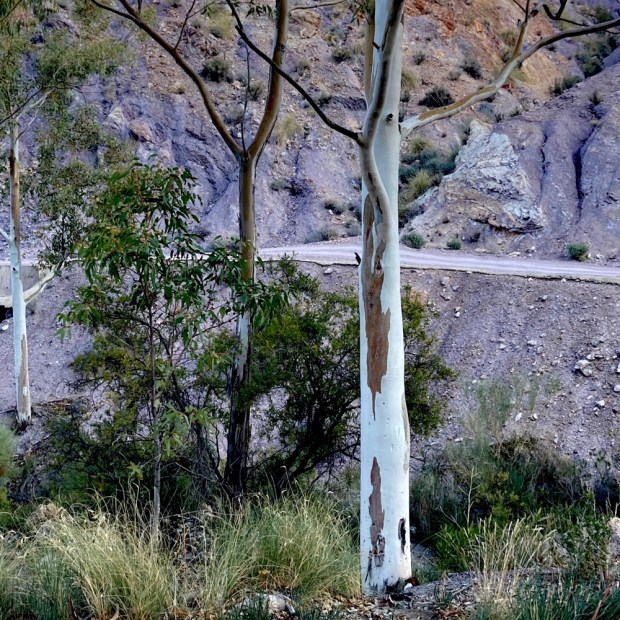


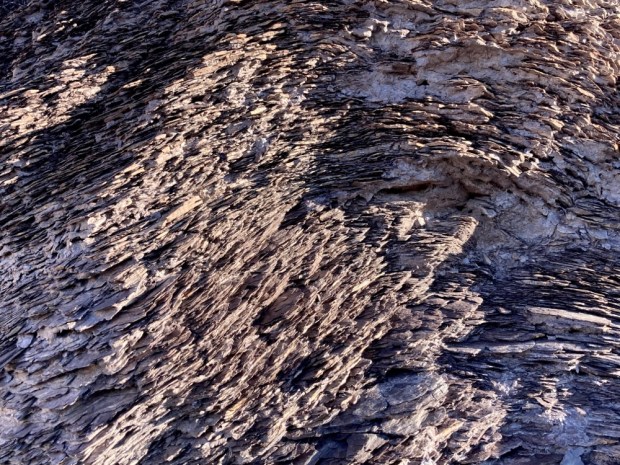

Time to move off, further east, away from the motorway to the lands north of Tabernas and a 13km route around the Valle del Buho,( Valley of the Owl).
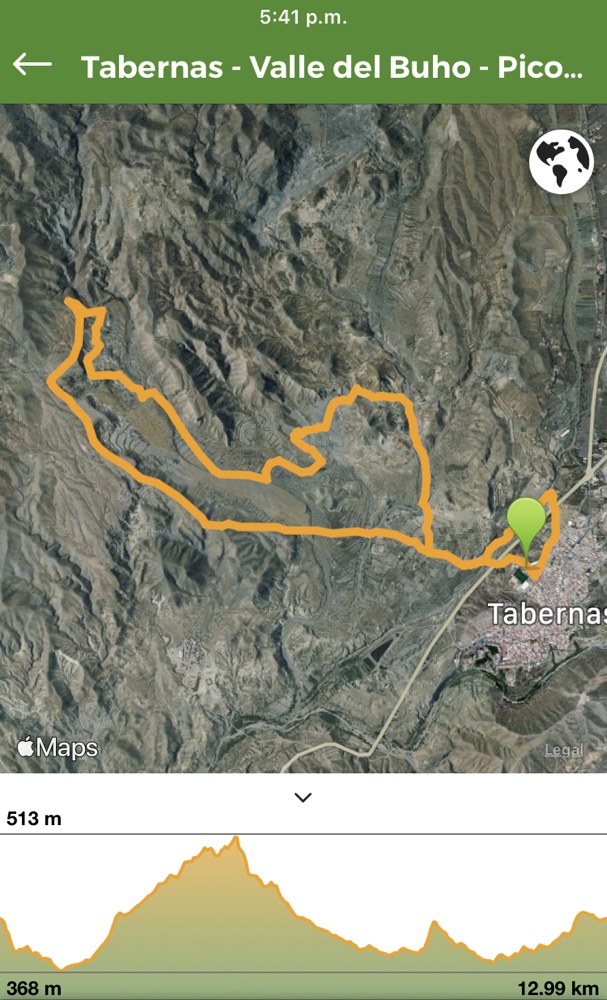
Leaving town on a dusty track past crumbling remains of abandoned cortijos through small scrubby groves of drying olives we climbed slowly and surely above the vast flat plain of the Valley Buho.


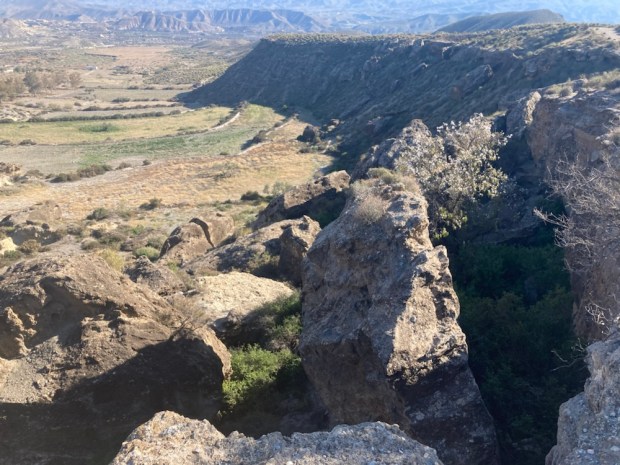
The farms below looked in a parlous state but seemed to be still trying whilst those at the top of the escarpment seemed to have given up the ghost entirely. Traditionally the higher ground was for growing esparto grass. The high cellulose content made superior paper and was a major industry along with more fibercraft work production of baskets, sacks, rope, fishing nets, beehives, harnesses, sandals and clothing. The introduction of plastic killed off the livelihoods of many and the lowering of annual rainfall and unproductive extensive systems have seen the end of grain as a crop. It was sad to walk across the abandoned terraces and grain threshing eras and reflect on the efforts of previous generations to wrest a productive living from those soils. 

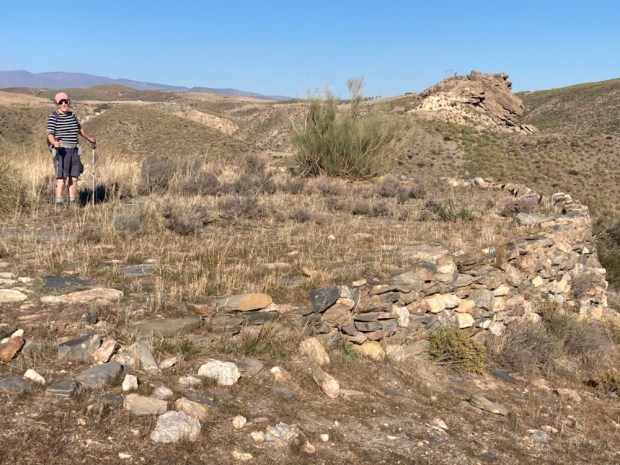
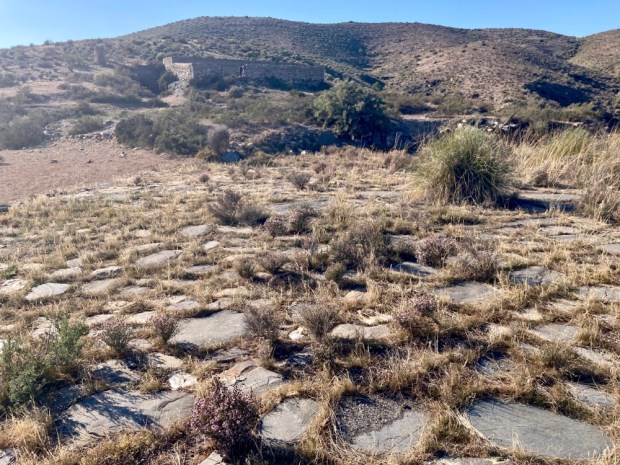

Back down at the valley bottom we followed the Rambla del Buho in the footsteps of Indiana Jones on his Last Crusade to the bizarre saline outcrops of Llano de Benavidas. Seeing the wide washed out area and flattened scrubs reminded me that when it does rain here the force of floodwater is horrendous. You don’t wanna be in a rambla in a thunderstorm.
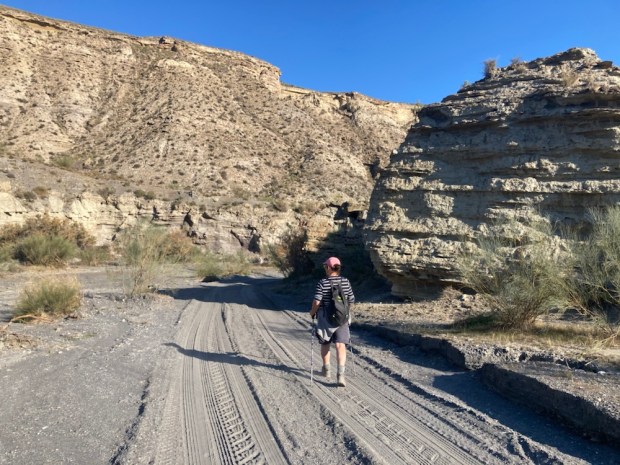
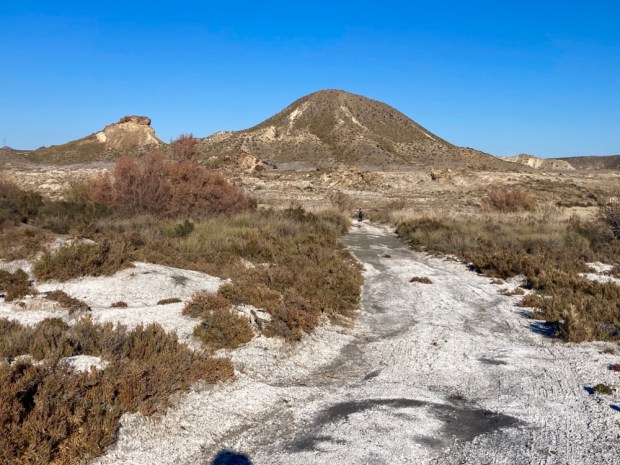

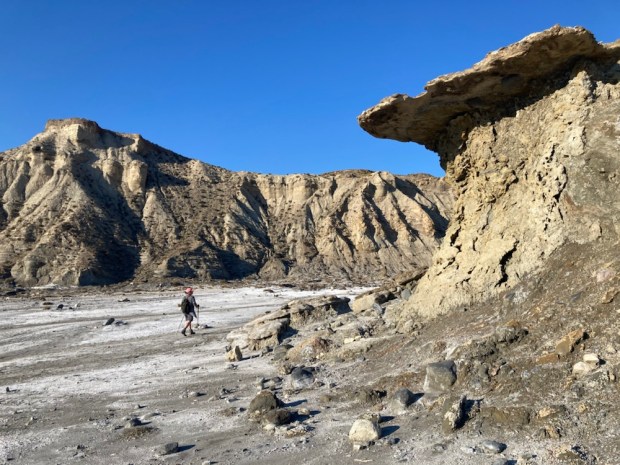
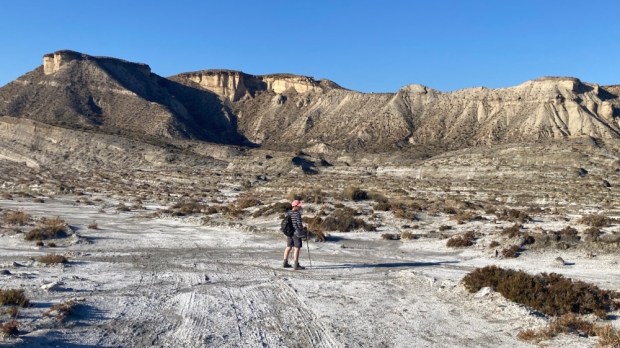

It’s something like the geographical equivalent of culture shock to emerge from those landforms into a man made world of flat surfaces, rectangular buildings and unnatural colour but I guess we are an adept species and so we left the giant rocks on the slope of La Tortuga (The Turtle) and before long we were back in the camper heading to our next destination, the Karst en Yesos de Sorbas Natural Area, where more wonders, and sadness, awaited.
